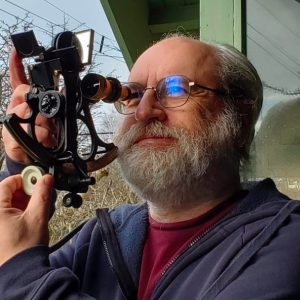Questions, Answers, and Questions

One satisfaction of astronomy is the sense of continuity with astronomers from all over the world and spanning the decades, centuries, and millennia. The wonders of the sky fill us with awe and provoke so many questions. I appreciate the multidisciplinary approach to answering these questions.
Today’s anecdote concerns an article published this week, with 25 authors from 5 countries. The Chinese Chang’e 5 probe brought back to Earth the first lunar samples in 4 decades. They targeted a place on the Moon that was suspected of being young, due to the region’s low density of craters. Galileo observed craters on the moon 400 years ago, but it was only in the 1960s that meteor impacts were confirmed to be the dominant mechanism of their origin.
The observational and theoretical development of celestial mechanics, universal gravitation, the solar nebula, and planetary accretion were all required to understand dating planetary surfaces, by measuring the size and number of craters. We also needed telescopes, rockets, robotics, petrology, geochemistry, and geochronology to complement the study. The Moon is the only planetary body where impact crater ages have been calibrated with radiometric dating, but there had been no samples so far measured that are between 3.2 and 0.8 billion years old. The new samples were dated at 1.96±.06 billion years, sitting in the middle of that gap and forcing a revision of the current crater dating method. The new date is very young for the Moon’s surface and brings up new questions, like why the Moon was still melting crust so recently.

I’m filled with a sense of connection with my fellow humans who can conceive of such questions, work on them from many different aspects over the centuries, answer some, and end up with even more questions. And I look up at the sky with happiness.
Look Up,
Randy Enkin email